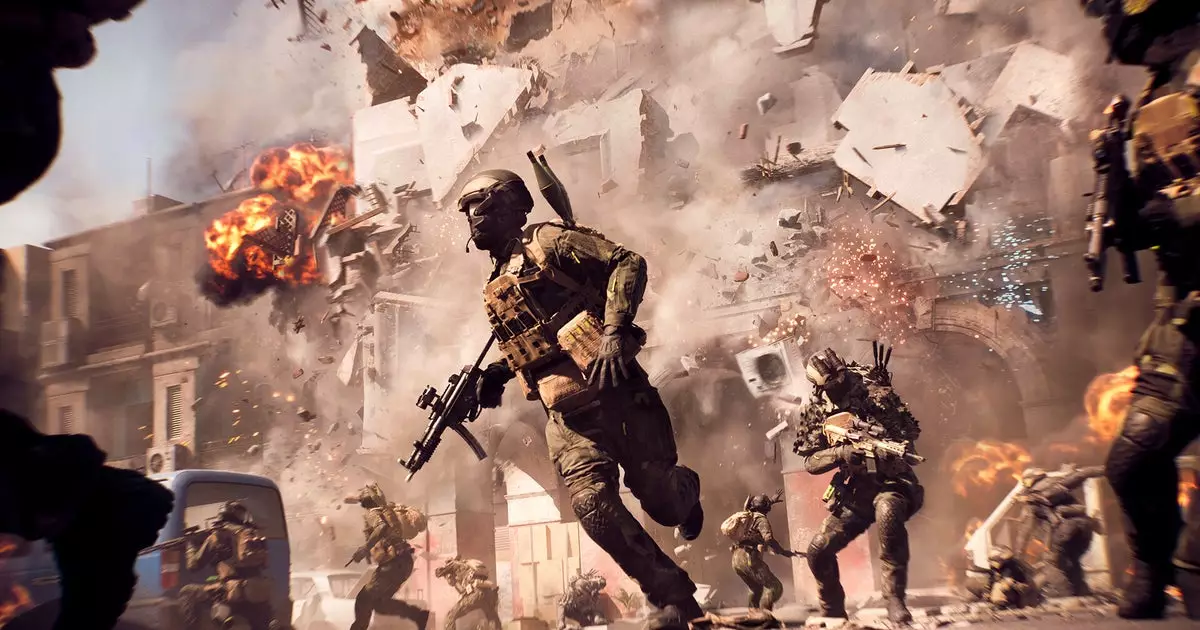The reveal of Battlefield 6’s multiplayer mode has set the gaming community ablaze with excitement and anticipation. This franchise, known for its immersive combat and large-scale battles, promises to push boundaries once again. However, beneath the hype lies a series of critical considerations regarding hardware requirements, platform constraints, and the overall gaming experience. As a perceptive analyst, I believe that Battlefield 6’s debut is as much about technological evolution as it is about gameplay innovation, and understanding these aspects can influence how players prepare for the impending launch.
Nuances of System Requirements: What Do They Really Mean?
While Electronic Arts has not furnished detailed PC specs directly, the information released on Steam provides valuable insights. The minimum specifications suggest that even older mid-range PCs can run Battlefield 6, with an Intel Core i5-7600K or AMD Ryzen 3 1200 processor, 16GB of RAM, and a mid-tier GPU like the RTX 2060. This indicates a deliberate effort to make the game accessible to a broader audience, avoiding a scenario where only high-end rigs can enjoy its core features. Still, the absence of mention regarding frame rates and graphical fidelity at these settings leaves some uncertainty about whether your gameplay will be smooth or just barely playable.
On the recommended side, hardware expectations escalate with an Intel i7-10700 or AMD Ryzen 7 3700X, paired with more powerful GPUs such as the RTX 3060 Ti or RX 6700 XT. Typically, these components are designed to deliver a more refined experience with higher frame rates and graphical details. However, the vagueness about exact performance metrics arguably fuels speculation rather than reassurance. Players may find themselves needing to compromise on visuals or performance if their hardware just meets the minimums.
Platform Ecosystems and Digital Rights Management: A Fractured Access?
One of the more compelling issues pertains to platform exclusivity and login procedures. For Steam users, the transition seems smooth—no need for additional app installations beyond your usual library. Yet, the game still mandates an EA account, echoing the recurring theme in modern multiplayer gaming: proprietary ecosystems leading to friction. Conversely, players purchasing via Epic Games Store face a more cumbersome process, requiring both the EA app and an EA account to access Battlefield 6. This layered DRM system brings to light concerns about user convenience, data privacy, and the potential for platform fragmentation.
The historical context of Battlefield’s past launches, which have sometimes been marred by bugs and server issues, underscores the importance of seamless platform integration. A game as ambitious as Battlefield 6 must deliver stability and accessibility to sustain its reputation. The proliferation of required apps and accounts risks alienating casual or less tech-savvy players, dampening the broader community’s enthusiasm.
Expectations Versus Reality: What’s the Likely Outcome?
EA’s assertion that “no prior Battlefield experience is necessary” suggests a strategic effort to widen the game’s appeal. While this is undoubtedly positive, it raises questions about how complex or nuanced Battlefield 6 will actually be. Will newcomers find the mechanics approachable, or will they be overwhelmed by large-scale battles that demand strategic thinking? Moreover, the legacy of launch bugs and server problems hints that players should temper their expectations regarding a glitch-free experience right out of the gate.
The broader industry trend indicates that AAA multiplayer launches often come with a launch window of patches, updates, and community adjustments. Battlefield 6 won’t be an exception, and players must be prepared for initial teething problems. Yet, if EA manages to deliver a stable, high-performance experience that truly lives up to its specifications, it could set a new standard for multiplayer shooters—one that balances accessibility with technical excellence.
Battlefield 6 promises to be a pivotal installment in the franchise’s storied history, provided it meets the high expectations set forth by its specs and marketing. However, the hype must be balanced with critical awareness of the challenges ahead: platform fragmentation, hardware demands, and a history of buggy launches. Only time will reveal whether EA can deliver on its promises without compromising accessibility or performance.
In the end, Battlefield 6 is more than just a game; it’s a case study in the evolving landscape of multiplayer gaming, reflecting both the industry’s innovation and its pitfalls. For players, this means staying vigilant, ensuring your hardware is prepared, and keeping realistic expectations at the forefront. The battlefield is set, but the victory depends on careful preparation and a discerning eye.

